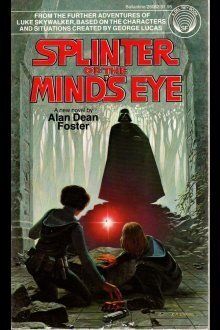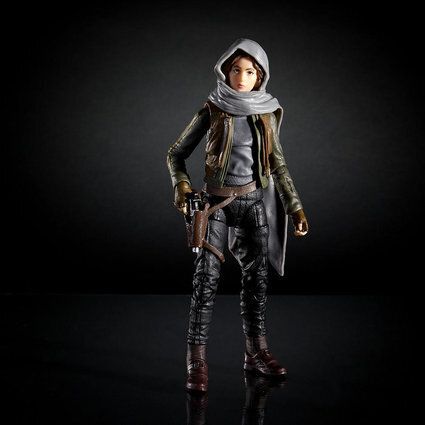Rest assured, Rogue One: A Star Wars Story hits its target like the filmmakers were Luke Skywalker bullseyeing womp rats in his T-16 back home on Tatooine.
That's not just a too-clever comparison, either.
The farm boy-turned-Jedi's memorable boast from Star Wars: A New Hope was Luke claiming he could shoot a two-metre-wide thermal exhaust port on the Death Star that, if hit precisely, would blow the whole thing up.
Rogue One is the story of why the moon-sized, planet-killing super weapon had that singular flaw and how the Rebel Alliance secured the top-secret Death Star blueprints that R2D2 would later deliver to Obi-Wan to kick off the original film.
Many have preemptively called this new Stars Wars film superfluous. Admittedly, this darker-hued, smaller-scale tale of bravery during wartime is arguably not a necessary addition to the canon for casual fans who don't care about filling in plot points.
But the movie is far more than its functional linkage between the two completed trilogies.

For one, it's the first Star Wars movie to be truly led by a woman -- Daisy Ridley's Rey was a breakout character in The Force Awakens, but Felicity Jones's Jyn Erso is the undeniable star of Rogue One.
It also has a cast diverse enough to inspire an boycott by the alt-right, a U.S.-based white nationalist movement.
Trump supporters launched a #DumpStarWars campaign after the election in response to screenwriters Chris Weitz and Gary Whitta, who respectively tweeted "Please note that the Empire is a white supremacist (human) organization" and "Opposed by a multi-cultural group led by brave women."
The tweets were deleted, but Weitz's subsequent twitpic of the Rebel symbol with a safety pin through it was left up:
.
Of course, neo-Nazi sites like Daily Stormer had been complaining since August about the lack of white male characters, which apparently counts as "white genocide." (They tried to do the same to The Force Awakens for having female and black leads, and that worked out well for them.)
Those of you who are sane, however, can again rest assured that there is zero tokenism to the multicultural cast's instantly iconic portrayals -- Mexican actor Diego Luna's Rebel captain, Cassian Andorby; African-American icon Forest Whitaker's radicalized Rebel leader, Saw Gerrera; British Muslim actor Riz Ahmed's Imperial defector, Bodhi Rook; and Chinese stars Jiang Wen playing bad-ass insurgent Baze Malbus and Donnie Yen as blind warrior monk Chirrut Îmwe.

Yen, in particular, is destined to become a fan favourite, as is new droid K-2SO, a comic relief character voiced by a Firefly pilot Alan Tudyk that is to C-3PO what BB-8 was to R2-D2.
This Jyn-led team is as well-cast as Guardians of the Galaxy, another film that some argued pre-release was an unnecessary part of the Marvel Cinematic Universe and a massive risk.
Rogue One is the first of what Disney is dubbing their "Star Wars Anthology" movies, morphing the film franchise from a narratively straightforward, nine-part story into a Marvel-style shared universe.
Now, George Lucas always structured his concept as three movie trilogies. That's why the first film was "Episode IV," and back when I was a kid we always imagined what the other movies might one day contain thanks to onscreen references to unseen "historical" events like the Clone Wars.
Even though we were following the Skywalker family, other stories were unspooling elsewhere.
But that was the movies, and part of their power was the notion that even though we were following the Skywalker family, other stories were unspooling elsewhere. Indeed, decades of licensed comic books, novels, cartoons and video games long ago turned this galaxy far, far away into a sprawling shared universe.
(Disney's cinematic resurrection kicked much of this "Expanded Universe" content out of official canon, albeit to reboot a new slate of "interconnected storytelling [that] will allow fans to explore this galaxy in deeper ways than ever before.")
This sort of storytelling may seem like a cash grab to the uninitiated, but not to fans of Marvel and DC comic books, which have always been similar to jazz in that different writers and artists come in and riff off core themes before stepping aside so someone else can solo.
The same approach applies to tabletop role-playing games like Dungeons & Dragons, video games like Halo, fantasy books like Dragonlance or even J.R.R. Tolkien's Middle Earth which contained more tales than just The Hobbit and Lord of the Rings.
All of these art forms focus on world-building so that any number of stories can take place within a shared setting.
In fact, one could argue that this tradition goes all the way back to the Bible which pulled together an incredible amount of loosely connected stories spanning millennia.

In the introduction to the 1996 re-release of the first Star Wars novel, 1978's Splinter of the Mind's Eye, which was set between A New Hope and The Empire Strikes Back, Lucas himself wrote:
"After Star Wars was released, it became apparent that my story -- however many films it took to tell -- was only one of thousands that could be told about the characters who inhabit its galaxy. But these were not stories that I was destined to tell. Instead, they would spring from the imagination of other writers, inspired by the glimpse of a galaxy that Star Wars provided. Today, it is an amazing, if unexpected, legacy of Star Wars that so many gifted writers are contributing new stories to the Saga."
The creative success of Rogue One simply proves that this applies as much to movies as to the other media that Lucas' Star Wars saga has expanded into.
Director Gareth Edwards is able to play with our nostalgia through self-referential visual cues, meta dialogue, Michael Giacchino's John Williams-nodding score and, of course, the pre-established story skeleton.
To paraphrase Obi-Wan, this is the Star Wars story we are looking for.
But being relatively self-contained from the main series provides an unexpected freedom that comes from telling a smaller side story, even if we already know how this particular tale fits into the larger narrative puzzle.
With the plot a literal foregone conclusion, the surprisingly gritty film focuses on developing the new characters without having to position them for a sequel, creating shocking war movie action sequences and updating the series' through line themes of imperialism, insurgency and weapons of mass destruction for our Trump and Brexit times.
To paraphrase Obi-Wan, this is the Star Wars story we are looking for, and audiences will likely leave the theatre as excited about the 2018 young Han Solo anthology film as they are about next year's "Episode VIII."
Follow HuffPost Canada Blogs on Facebook
Also on HuffPost:
